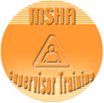

Project > Documents > User Roles
The user roles listed below are divided into primary and secondary audiences.
Primary Audience
The Experienced Miner Seeking Promotion
- Who would use the training?
- The experienced miner who is knowledgeable about and well-rounded in technical tasks associated with mine operations
- How would they use the training?
- To formalize training needed to become a supervisor
- To gain a better understanding of the expectations of the mine supervisor position
- To ensure that they are exposed to all aspects of current mining operations
- As a tool to build upon industry-mandated training
- To improve communication skills
- To update and learn technology skills
- How do they expect the training to be delivered?
- Literature states that GenXers learn well independently, want to be involved with what they are learning and get feedback on their use of skills. Therefore, training should be delivered using:
- Hands-on training (on-the-job training, apprenticeships)
- Authentic learning environments
- Collaboration
- Training materials that include visual stimulation, such as headlines, quotes, graphics, and lists
- Incorporation of technology
- Literature states that GenXers learn well independently, want to be involved with what they are learning and get feedback on their use of skills. Therefore, training should be delivered using:
Intermediate Miner Seeking Promotion
- Who would use the training?
- Miners with 3+ years experience and are eligible for promotion to mine supervisor
- How would they use the training?
- To learn tasks and procedures performed by supervisors
- As a study resource to be used for promotion
- As a formalized and comprehensive way to learn supervisory tasks
- How do they expect the training to be delivered?
- This group is largely composed of Generation Nexters; they need structured and formalized training to be most effective.
- Group-oriented
- Varied technology
- Hands-on practice in classroom
- Practice at worksite
- Simulation
New Mine Supervisor
- Who would use the training?
- New mine supervisors who have had limited technical training/work experience and lack adequate mentoring due to the shortage of veteran supervisors (Kowalski et al, 2004)
- How would the new mine supervisors use the training?
- To reinforce previously learned material and enhance technical knowledge
- To define what their new position requires of them
- To determine the best way to accomplish required tasks
- To prioritize areas of responsibility
- As a reference tool
- How do they expect training to be delivered?
- GenXers expect training that is:
- self-paced
- visually stimulating
- not text-heavy
- Nexters expect training that includes:
- written explanatory information
- interactive learning activities
- the use of technology
- GenXers expect training that is:
Secondary Audience
- Who would use the training?
- New miners
- Veteran mine supervisors
- Trainers/Facilitators
New Miners lacking the required amount of experience to become a mine supervisor
- How would the training be used?
- As an information resource for career development planning to develop requisite skills in preparation for consideration as mine supervisor candidate
- To develop a better understanding of duties and responsibilities of a mine supervisor
- How do they expect the training to be delivered?
- Formalized mentoring framework
- Classroom situation that encourages interaction between students
- Group learning
- Technology expected to be used in training
- Lively, varied, with multiple focal points similar to Generation Xers
Veteran Mine Supervisors
- How would the training be used and/or needed?
- To continuing education for new technology and procedures
- As a refresher
- In the development of ‘train-the-trainer’ materials
- As a mentor guide
- How do they expect the training to be delivered?
- Well-organized
- Valid content and up-to-date
- Easy to use
- Easily accessed
- Traditional delivery methods, group and situational learning environments
Trainers/Facilitators involved in mine supervisor training
- How would the training be used and/or needed?
- Train-the-trainer materials
- Job aids/handouts for training
- Instructional methods and strategy
- Just-in-time training
- How do they expect the training to be delivered?
- Well-organized
- Valid content and up-to-date
- Easily accessed
- Varied and appropriate media and delivery methods
